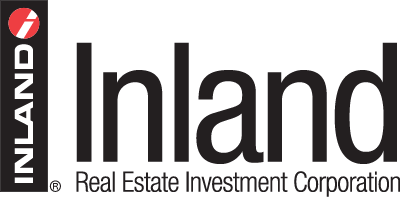Now that LIBOR is Gone, What is SOFR?
When a global benchmark that has been the cornerstone for interest rates on floating-rate commercial mortgages is sunsetted, that is big news. The process of transitioning from LIBOR to a new benchmark has begun.
But why is LIBOR being replaced, and what does the change mean for you? This post addresses that question.
First, Some LIBOR History
LIBOR is the acronym for the London Interbank Offered Rate, a benchmark interest rate used by major global banks lending to one another in the international interbank market for adjustable-rate loans, mortgages, and corporate debt. LIBOR has been the standard for reflecting bank-to-bank borrowing costs since its introduction in 1984, when the British Bankers Association supported the adoption of uniform trading terms for actively traded markets.
A rate-fixing scandal occurred in 2012 when several of LIBOR’s panel banks were accused of colluding to manipulate rates. After lengthy investigations, several banks were penalized with fines and regulatory actions. As a result, LIBOR’s long-standing halo of global trust was tarnished, leading the Federal Reserve and regulators to phase out the benchmark in favor of a new, more transparent standard.
We recently interviewed Jason Fruchtman, Head of Capital Markets at Sound Point Capital Management, LP, to discuss the switch from LIBOR to SOFR. Let's watch below.
SOFR: A New Benchmark
The transition from LIBOR to a new benchmark began December 31, 2021, and through several scheduled phases, will be sunsetted by mid-2023. That benchmark, known as SOFR, which stands for Secured Overnight Financing Rate, was selected by the Alternative Reference Rates Committee, a diverse group of private-market entities convened by the Federal Reserve Board of New York.
The primary difference between LIBOR and SOFR is how rates are calculated. LIBOR rates are set each day by receiving estimates from the panel banks that comprise the benchmark. Estimates are based on what the banks think they would have to pay if they borrowed money from another bank on the interbank lending market in London.
With SOFR, the New York Fed calculates rates by taking the volume-weighted median (50th percentile) of transactions in three markets for repurchase (repo) agreements collateralized by U.S. Treasury securities. Repo transactions are overnight and fully secured by government securities.
Because SOFR is based on actual data, compared to LIBOR’s estimated rate model, it is expected to give market participants more confidence in the validity and accuracy of the benchmark.
How Does the SOFR Transition Affect You?
The transition from LIBOR to SOFR impacts commercial real estate (CRE) investments because many CRE loans are based on LIBOR rates. Transitioning to SOFR will require borrowers to ensure each loan document includes appropriate transition language.
For additional insights on commercial real estate credit markets, download your complimentary copy of our newest whitepaper, Asset Allocation, Correlation & Alternative Investments: The Case for Commercial Real Estate Credit.
Inland Investments is not adopting, making a recommendation for or endorsing any investment strategy or particular security. All views, opinions and positions expressed herein are that of the author and do not necessarily reflect the views, opinions or positions of Inland Investments. All opinions are subject to change without notice, and you should always obtain current information and perform due diligence before participating in any investment.
Inland Investments does not provide legal or tax advice and the information herein should not be considered legal or tax advice. Tax laws and regulations are complex and subject to change, which can materially impact any investment result. Inland Investments cannot guarantee that the information herein is accurate, complete, or timely. Inland Investments makes no warranties with regard to such information or results obtained by its use, and disclaims any liability arising out of your use of, or any tax position taken in reliance on, such information.
All investing is subject to risk, including the possible loss of the money you invest. In particular, Commercial real estate (CRE) credit and securities investments are subject to the risks typically associated with CRE which include, but are not limited to: market risks such as local property supply and demand conditions; tenants’ inability to pay rent; tenant turnover; economic matters such as inflation and interest rate fluctuations; increases in operating costs; changes in laws and regulations; relative illiquidity of real estate investments; changing market demographics; acts of nature such as hurricanes, earthquakes, tornadoes or floods; and availability of financing. Some of the risks specifically related to investing in a credit fund include, but are not limited to: distributions cannot be guaranteed and may be paid from sources other than cash flow from operations, including borrowings and net offering proceeds; and conflicts of interest with, and payment of fees to, affiliates.

